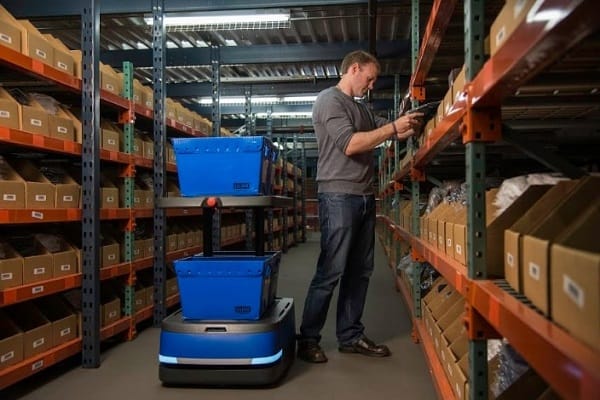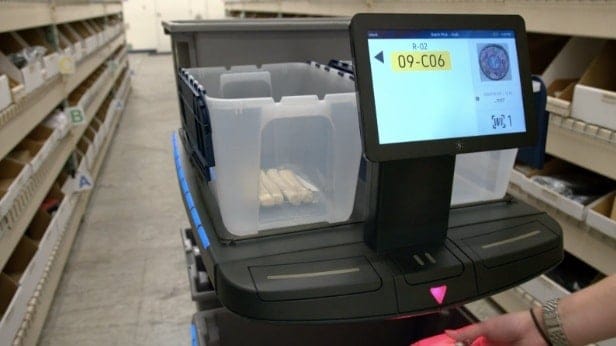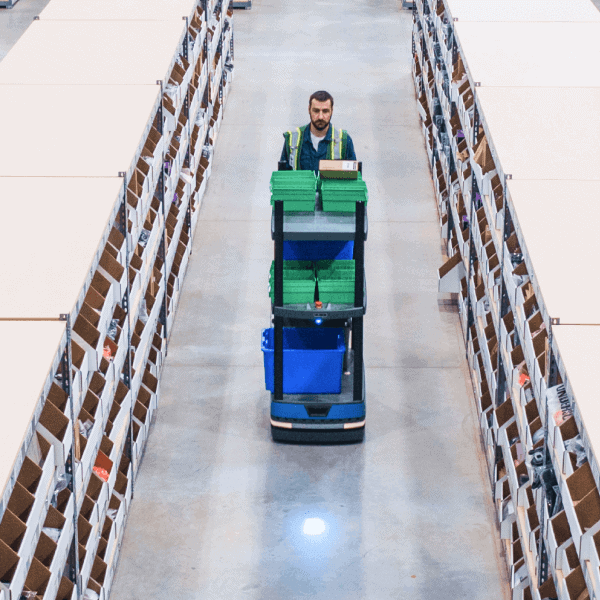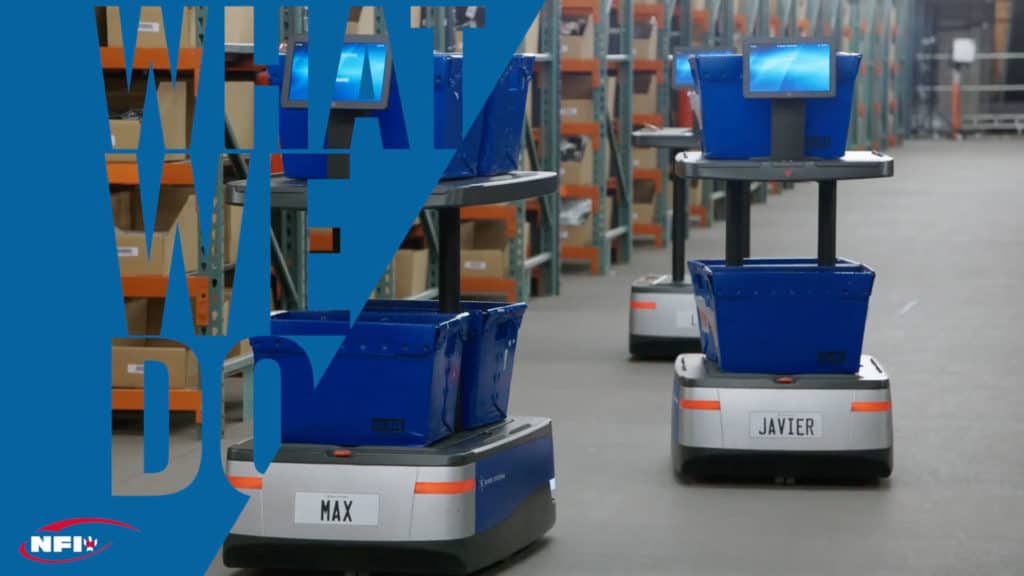The autonomous mobile robot definition is essentially that robots can move and operate within a warehouse environment without direct supervision from a human operator. Rather than rely on magnetic strips or tracks, AMRs use sensors and maps to interpret the environment, navigate through the warehouse floor and detect/avoid obstacles.
AMRs can perform several warehouse and order fulfillment functions, including executing pick strategies, transporting goods and materials and guiding/helping associates as they perform their tasks. Let’s discuss a few of the ways autonomous mobile robots can help transform warehouse operations.
1. Reducing walking time

In traditional warehouses, associates must walk to the picking area, identify and retrieve the SKU(s) to be picked and then walk back to sorting stations. This walking back and forth increases the overall time spent on picking tasks.
AMRs, especially collaborative robots, boost productivity (by up to 2-3x) in order fulfillment operations by automating the travel between the area where orders are allocated to a cart and the inventory picking area and the travel between the end of a picking cycle and sorting stations or packing and shipping areas.
AMRs also help warehouse associates pick items for multiple orders at the same, thus reducing the number of trips. Not only does this reduce overall travel time through the warehouse, but it also reduces physical/mental fatigue thus leading to fewer mistakes and accidents. AMRs can determine and follow optimized picking routes and are particularly valuable in facilitating zone and pick-and-pass picking methodologies.
2. Making automation easy to integrate
Compared to conveyor systems and other automation systems, it’s relatively easy to deploy AMRs in warehouses and order fulfillment centers. In fact, there’s no need to make permanent, expensive or structural changes when implementing AMRs. They can be easily deployed during working hours since implementation doesn’t interfere with the day-to-day operations of your facility.
3. Directing workflows to improve accuracy and efficiency

AMRs are incredibly versatile. Not only can they speed up the picking process by handling the tedious task of moving products around, but some collaborative robots, like Chuck by 6 River Systems, guide associates through tasks by navigating to inventory locations, displaying the items and quantities to pick, directing workflows and keeping associates on task to improve the accuracy and efficiency of order fulfillment operations. They prioritize work and group similar tasks to increase overall productivity and reduce the time taken to fulfill orders while also reducing human error.
4. Enabling flexible capital expenses
AMRs can be deployed without any permanent or expensive infrastructural changes to warehouses and distribution facilities — which means businesses on a tight budget can enjoy the benefits they deliver to order fulfillment operations.
AMRs use maps to dynamically navigate through the warehouse floors, autonomously identifying and avoiding obstacles. As such, there’s no need to install tracks and magnetic strips, set up dedicated paths or even restrict forklifts and humans from operating in areas where the robots have been deployed. This means there are no costly capital investments required to deploy collaborative robots like Chuck within your facility. The ease of deployment also means that they can easily be moved from one facility to another.
5. Augmenting human labor
Rather than traveling through the warehouse and carrying items along as they pick, human workers can focus on other high-value tasks and allow AMRs to move products between workers and stations. This eases the physical strain on human workers since they no longer have to transport orders from one area to the next.
Also, AMRs work alongside human associates and help to keep them on task. They can be programmed to travel optimal routes for the assignment, thus setting the walking pace for associates and simultaneously guiding them on the best way to complete a set of tasks.
AMRs can be designed and programmed to perform any number of tasks — whether it’s delivering products to a workstation or working alongside humans as they go about executing various order fulfillment tasks. Others are designed to handle material transfers from storage bins to sorting stations or integrate with picking arms to automate your preferred pick strategy.
No matter the warehouse transformation or order fulfillment tasks, you can be sure that there’s an AMR ready to reduce the labor requirement. Looking for a collaborative robot to help your associates handle tedious, time-consuming order fulfillment operations in your facility? Check out Chuck, our easy-to-deploy collaborative robot.


